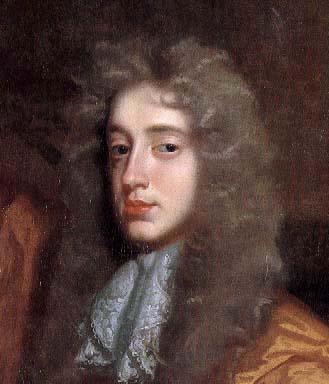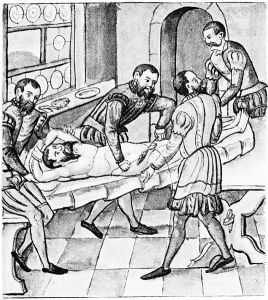

Going to a spa town to take in the healing waters was a well-trodden path for patients in early modernity for a range of illnesses. Throughout the period doctors including the famous Thomas Sydenham, styled as the English Hippocrates, promoted the use of healing spas. Yorkshire gentlewoman Alice Thornton spent a month at Scarborough spa in August 1659 on the recommendation of her doctor, after a difficult birth. In 1699 Benjamin Allen wrote a medical treatise dedicated to the health benefits of spas called The Natural History of the Chalybeat and Purging Waters of England with their Particular Essays and Uses. Allen’s book analysed the nature of the healing waters at the various spa towns across the country and described how ‘Scarborough Water is Chalybeat [iron rich] and Purges, it has Qualifications of a Purging Water’.1
Being treated at a spa then became a fashionable cure and John Wilmot, the Earl of Rochester turned a satirical eye on the patients at the Tunbridge Wells spa in his eponymous poem. Rochester called the spa ‘The rendezvous of fools, buffoons, and praters, / Cuckolds, whores, citizens, their wives and daughters’.2 In his book, Allen claimed
Tunbridge Water doth in some provoke the Menses, in some stop them, so this Water might produce the Obstruction before named in a Person of a Sanguine Complexion on that account, which is a natural Effect of a Plethora; yet it must be allowed to be but answerable to the Quality of the Salt.3
This use was also referred to by Rochester who included a conversation between two women, one of whom had brought her teenage daughter to the spa as she was now 16 but had not yet started her periods.
So while going to the spa was a popular choice, for one author, at least, the spa waters alone would not be enough to ensure a cure. Clergyman Thomas Ken stated: ‘Do not think the Baths can do you any good, without God’s immediate blessing on them; for it is God that must first heal the waters, before they can have any virtue to heal you’.4 Ken went on:
Whatsoever the Calamity be, whether sickness, or lameness, or want of Children, which brings you to this place, I am sensible how tender a regard I ought to have for you; since you are come within my Fold, in imitation of our most merciful Redeemer, who in respect even of our bodily distempers, Sympathised with our miseries, bore our griefs, and carried our sorrows.
Styling himself a spiritual physician, Thomas advised that his instruction should be observed as closely as those of the ‘corporal’ doctor. It wasn’t enough for the patient to plead for God’s help though and Thomas demanded that patient and doctor prayed together
I earnestly recommend to you this Counsel of the Son of Sirach; and therefore to you that are sick, or infirm, or lame, I recommend Repentance, and Prayer, and Sacrifice; the Sacrifice of Alms, by which you will offer to God a sweet savour. To your Physician I also recommend devout Prayer to the Author of Health, and Sickness, that his Physick may prosper; and then is Physick like to procure a Blessing, when both the Patient, and the Physician join in their Prayers for it.5
This ably demonstrates an important aspect of early modern thinking. The physical body wasn’t thought to be able to be completely healthy without spiritual good health. While not everyone who had the means to attend a spa was as devout as Ken Thomas, it is undoubtedly the case that most people would agree that divine will played a key role in their return to health and would be likely to cast a prayer of thanksgiving for a successful cure.

(c) Sara Read all rights reserved
___________________________________________
1 Allen, Benjamin, The Natural History of the Chalybeat and Purging Waters of England with their Particular Essays and Uses (London: B Smith and B Walford, 1699), p. 151.
2 John Wilmot, Earl of Rochester, ‘Tunbridge Wells’, in Selected Works, ed. by Frank H. Ellis (London: Penguin, 1994), pp. 25-28.
3 Allen, Natural History of Chalybeat, p. 166.
4 Thomas Ken, Prayers for the Use of all Persons Who Come to the Baths for Cure (London: C Brome, 1692), pp. 3-5.
5 Ibid, pp. 20-21.



Thanks for this extremely interesting piece! Did you know that there were also ‘healing spas’ for horses in early modern Europe?
Thanks! No, I’d no idea. Sounds fascinating, but I suppose horses were so integral to people’s lives that it paid dividends to look after them well.
That’s amazing!